It Was A Stormy Day With Rain Expected In The Valley Below (1/27/2010)
Did you know? - The Palm Springs Aerial Tramway in Palm Springs, California is the largest rotating aerial tramway in the world. It was opened in September 1963 as a way of getting from the floor of the Coachella Valley to near the top of San Jacinto Peak and was constructed in rugged Chino Canyon. Before its construction, the only way to the top of the mountain was to hike for several hours from Idyllwild
The eight-and-a-half-minute ride begins at the Valley Station at 2,643 ft (806 m) and passes up North America's sheerest mountain face through several life zones on its way to the Mountain Station at 8,516 ft (2,596 m) above mean sea level.

In Summary
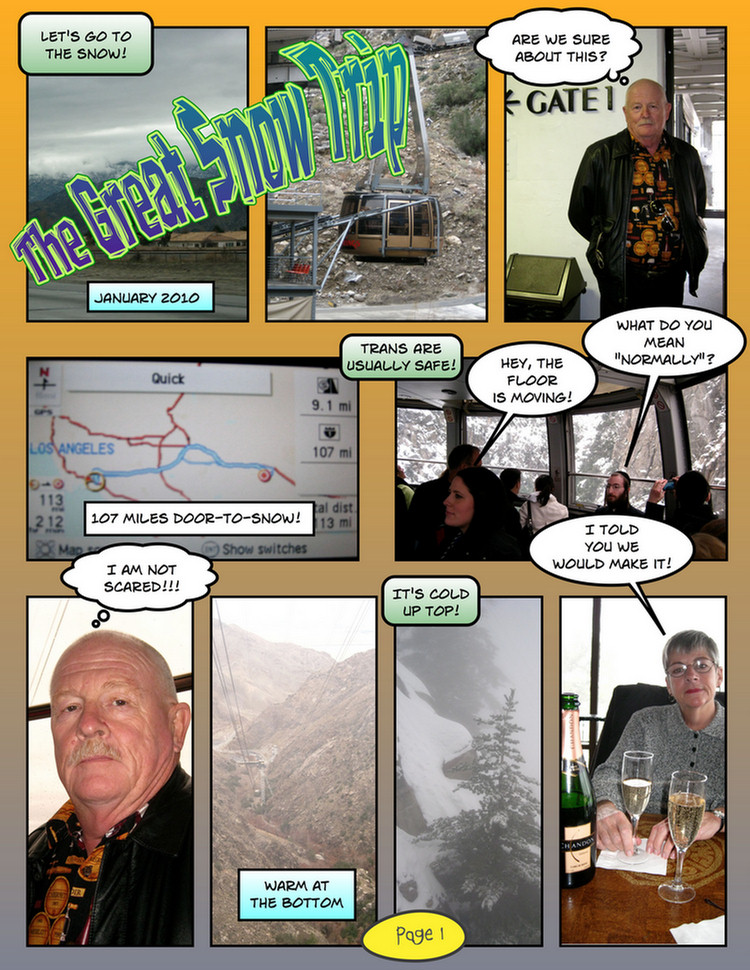
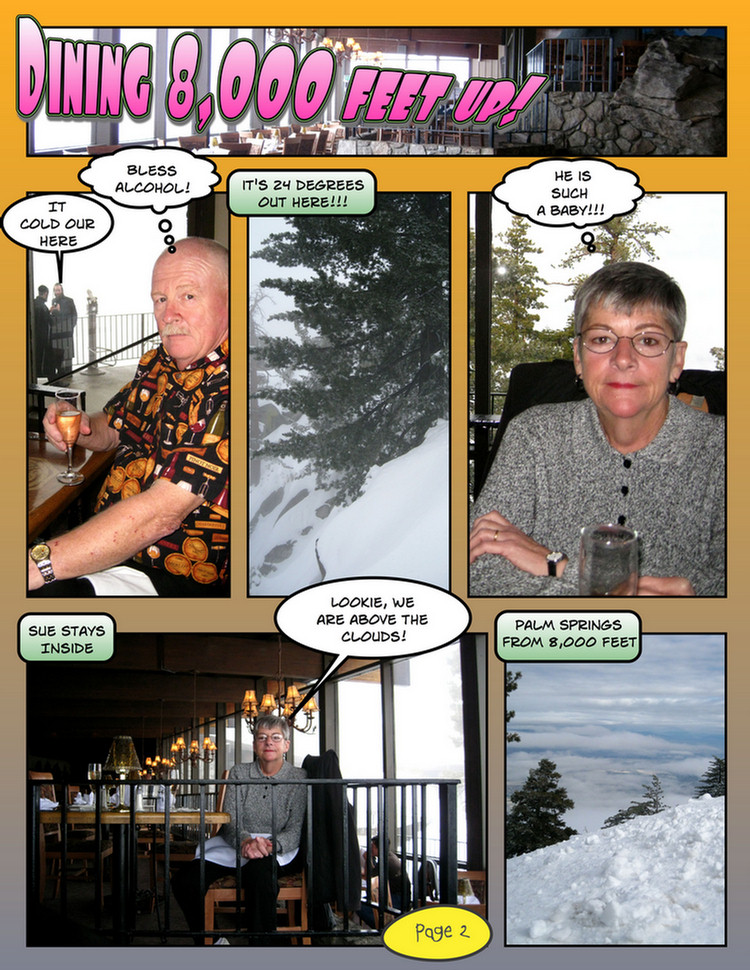
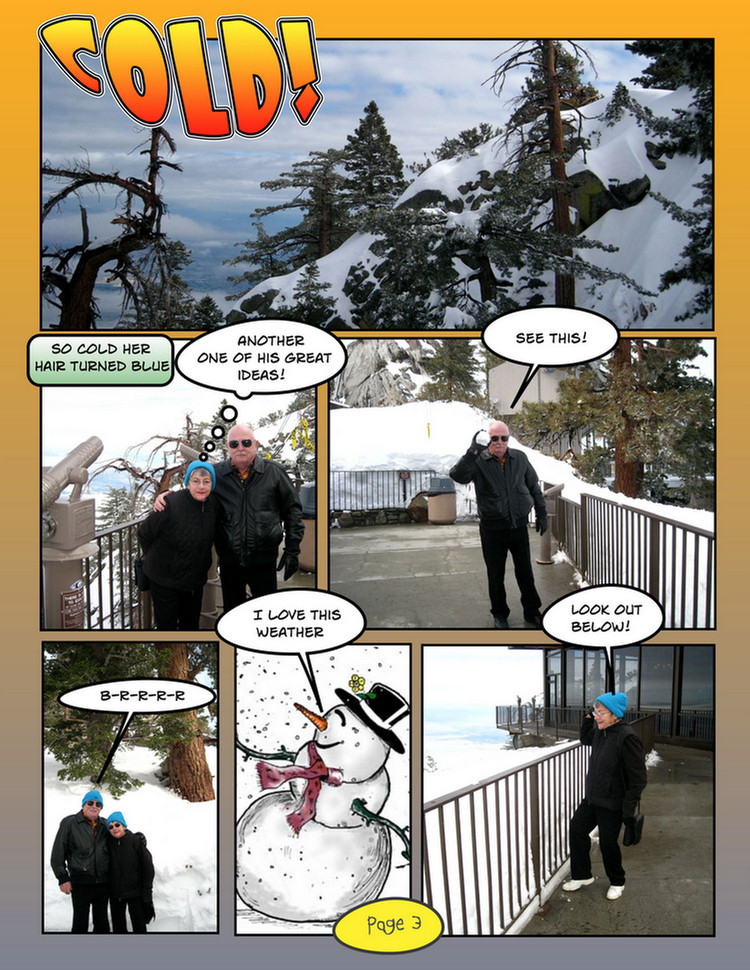
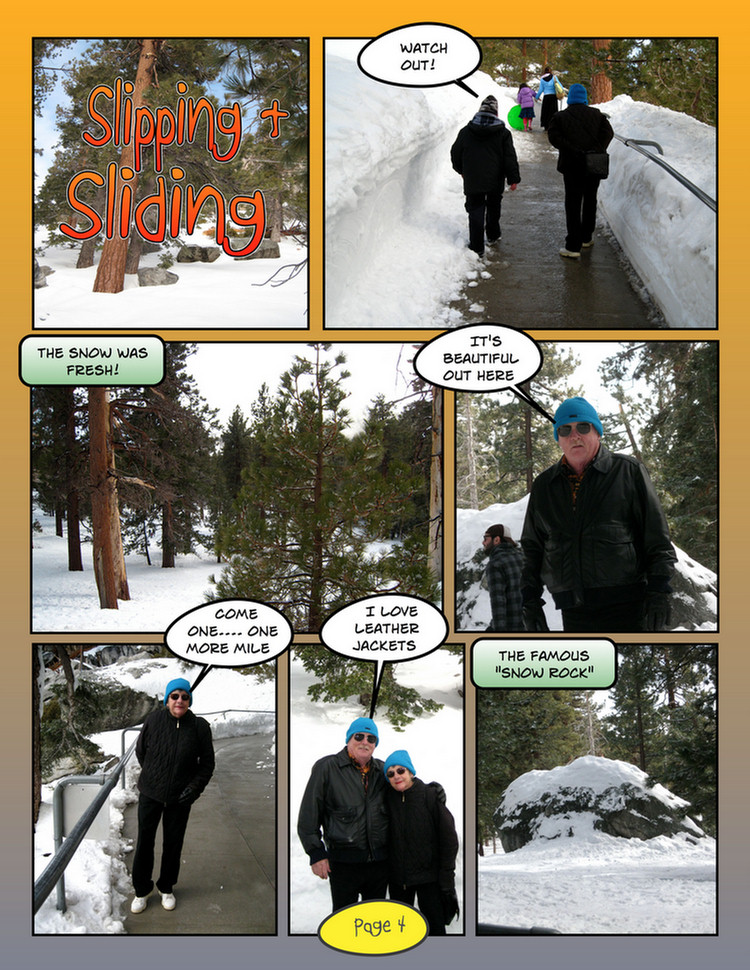
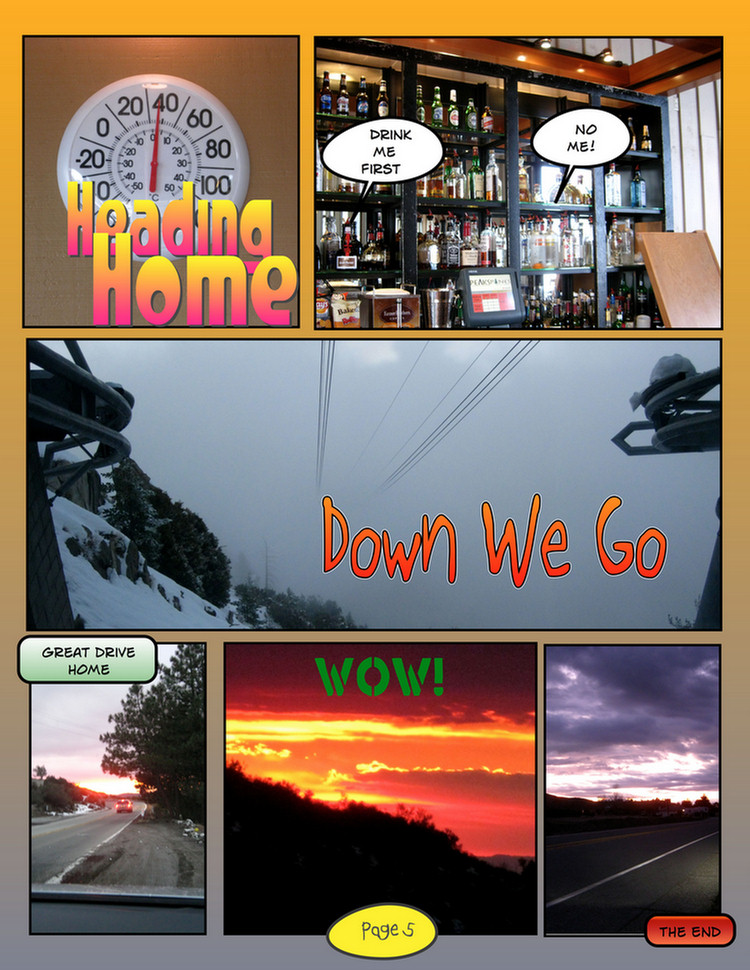
Paul Wanted To See Snow

It had been raining for a week and golf course was closed so we decided it is time to see snow!
I checked the weather and it looked reasonable... No rain the immediate forecast and plenty of snow.
We took off about 9:30 am and got there at 11:20 and made a mad dash for the next trip to the top! We made it by 40 seconds.
Ten minutes later we were up to our keesters in fresh beautiful snow!!!
On Our Way

Door to door, 113 miles! We cut 22 minutes off the forecast!
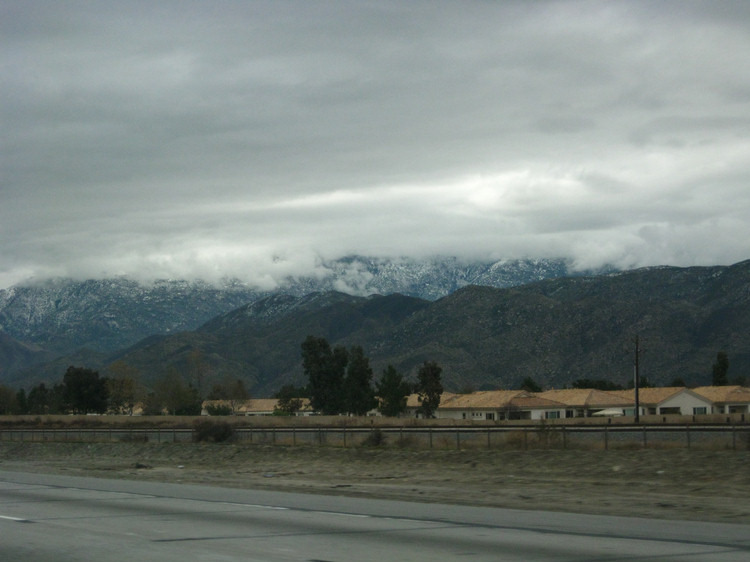
View from Highway: It was cold but no rain, the mountains had snow last night
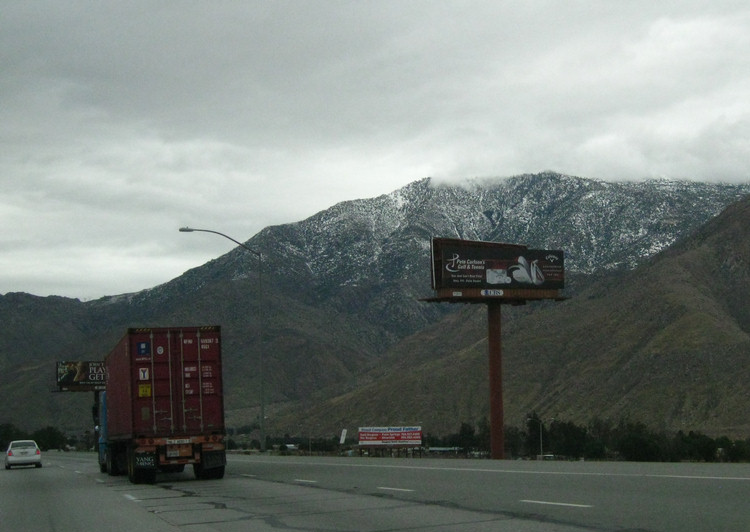
See you in a few minutes
Five More Miles Up The Canyon To 2,600 Feet
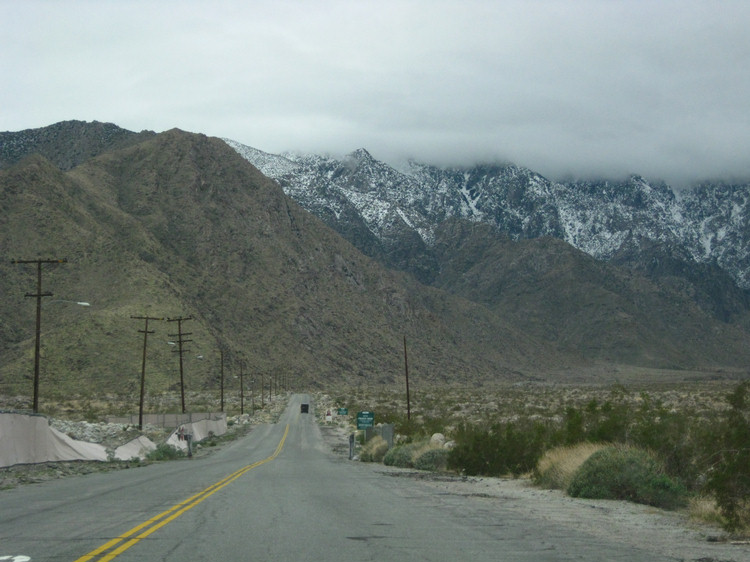
5 1/2 miles from the Highway 111 to the base station at 2,600 feet
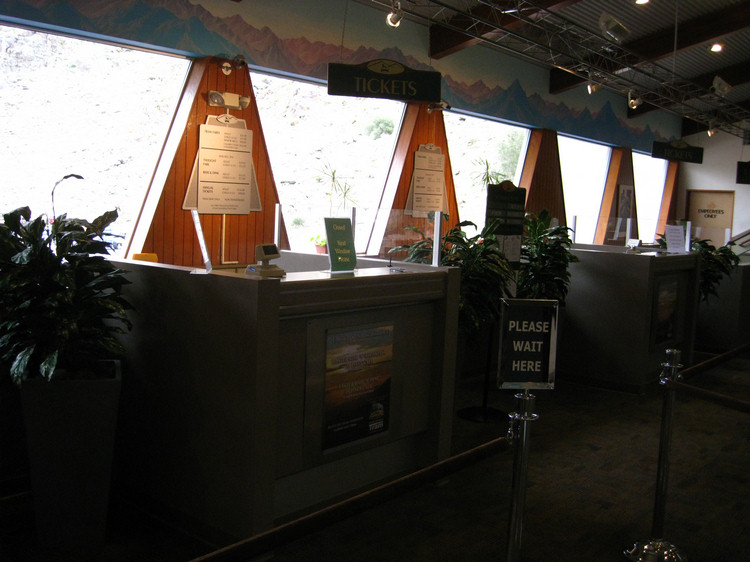
Time for tickets... We had no proble, getting aboard
Here We Go!
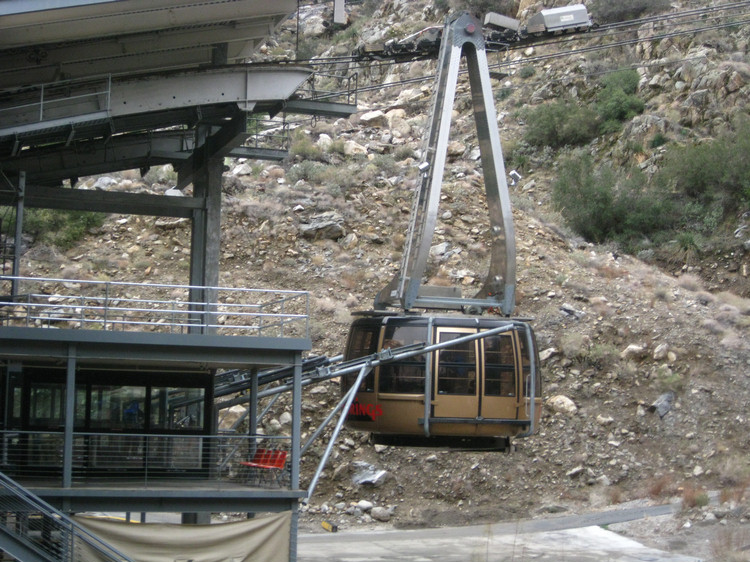
Doesn't look too bad, huh? Looks small from a distance
Did you know? - An aerial tramway (U.S. English) or cable car (British English) is a type of aerial lift in which a cabin or other conveyance is suspended from a fixed cable and is pulled by another cable.
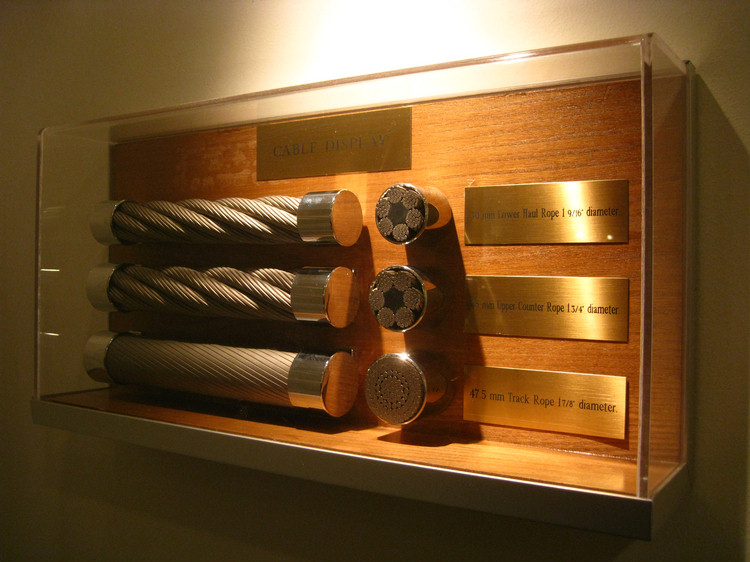
Different ropes for different purposes
Did you know? - An aerial tramway consists of one or two fixed cables (called "track cables"), one loop of cable (called a "haulage rope"), and two passenger cabins. The fixed cables provide support for the cabins. The haulage rope, by means of a grip, is solidly connected to the truck (the wheel set that rolls on the track cables). The haulage rope is usually driven by an electric motor and being connected to the cabins, moves them up or down the mountain.
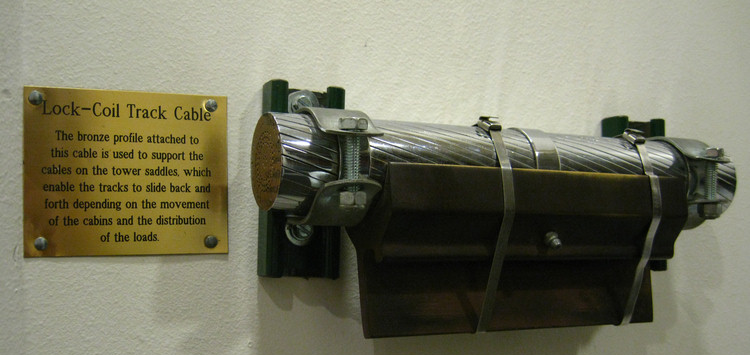
Did you know? - Wire rope consists of several strands laid (or 'twisted') together like a helix. Each strand is likewise made of metal wires laid together like a helix. Initially wrought iron wires were used, but today steel is the main material used for wire ropes.
Modern wire rope was invented by the German mining engineer Wilhelm Albert in the years between 1831 and 1834 for use in mining in the Harz Mountains in Clausthal, Lower Saxony, Germany. It was quickly accepted because it proved superior to ropes made of hemp or to metal chains, such as had been used before.
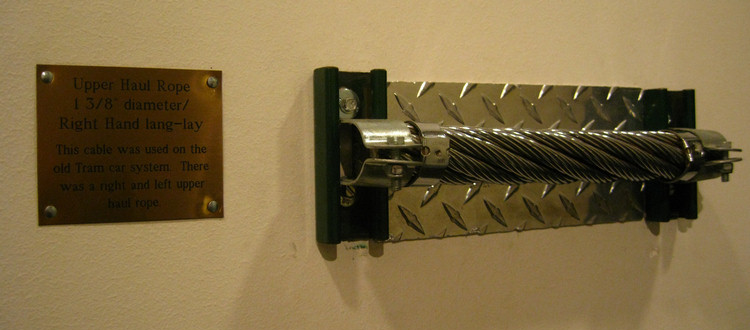
Hauls the gondola up to the top

After seeing the steel ropes Paul is still not totally convinced!
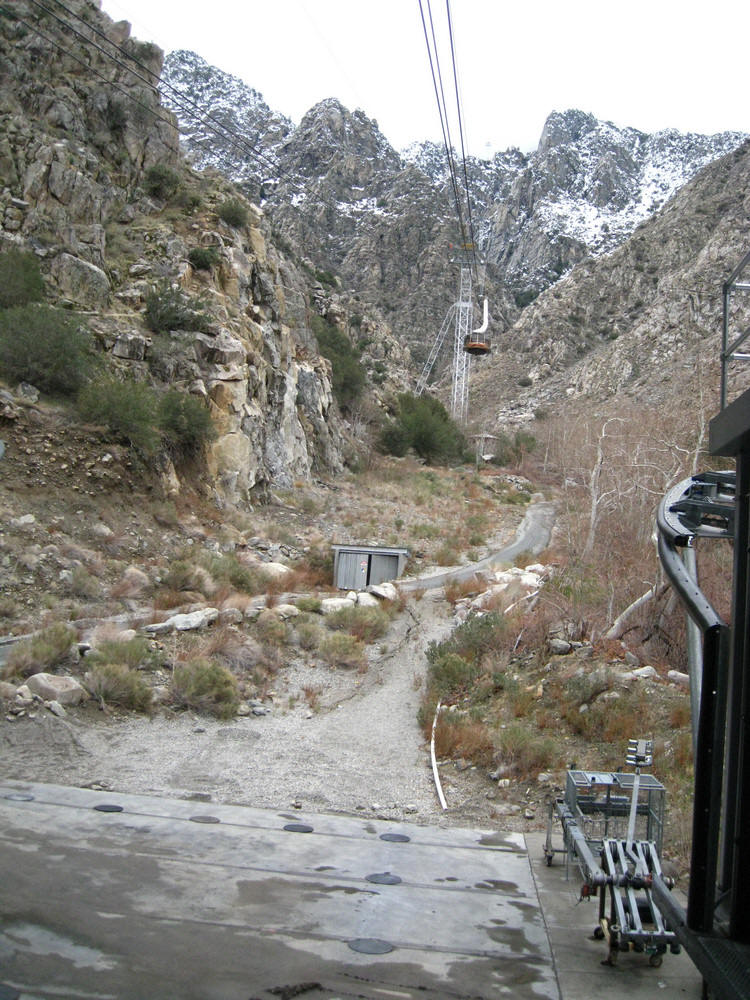
Slip sliding away
Did you know? - Two-car tramways use a jig-back system: A large electric motor is located at the bottom of the tramway so that it effectively pulls one cabin down, using that cabin's weight to help pull the other cabin up. A similar system of cables is used in a funicular railway. The two passenger cabins, which carry from 4 to over 150 people, are situated at opposite ends of the loops of cable. Thus, while one is coming up, the other is going down the mountain, and they pass each other midway on the cable span.
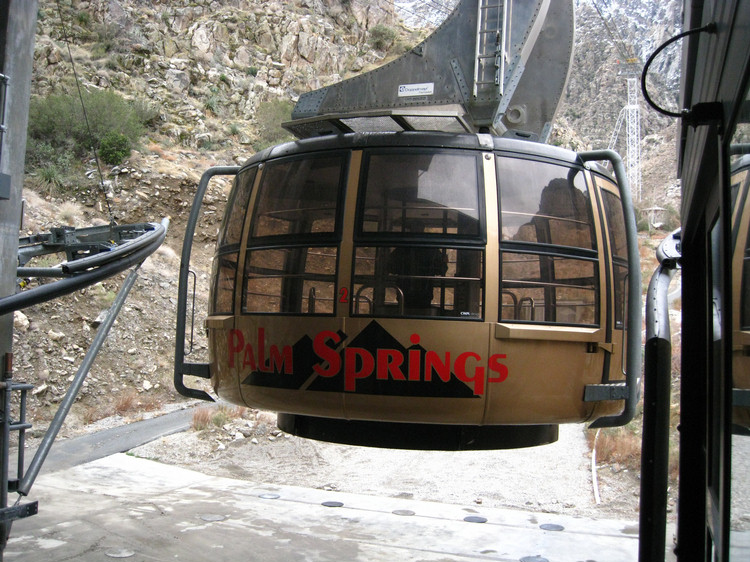
The floor rotates within the cabin... 2.5 revolutions per trip
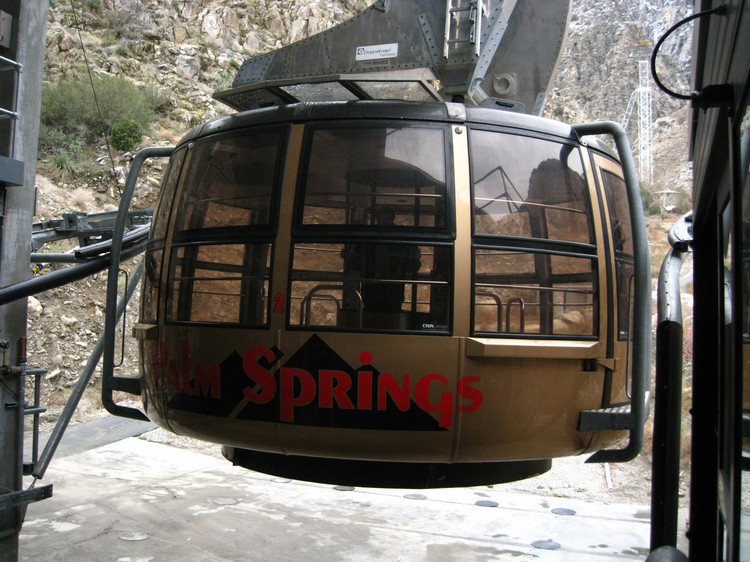
It has large exit doors
Now It Really Starts
 Tower (Aerial Tramway Support Pillar) Number One
Tower (Aerial Tramway Support Pillar) Number One
Did you know? - An Aerial Tramway Support Pillar (ATSP) is a pylon-like construction bearing the cables of an aerial tramway. They are usually of steel framework construction. ATSPs are not designed as a stopping-off point for large numbers of passengers or goods, but some are designed to allow maintenance staff access to the cars. Some ATSPs have built-in ladders or stairs for maintenance access, and some taller examples have an elevator.
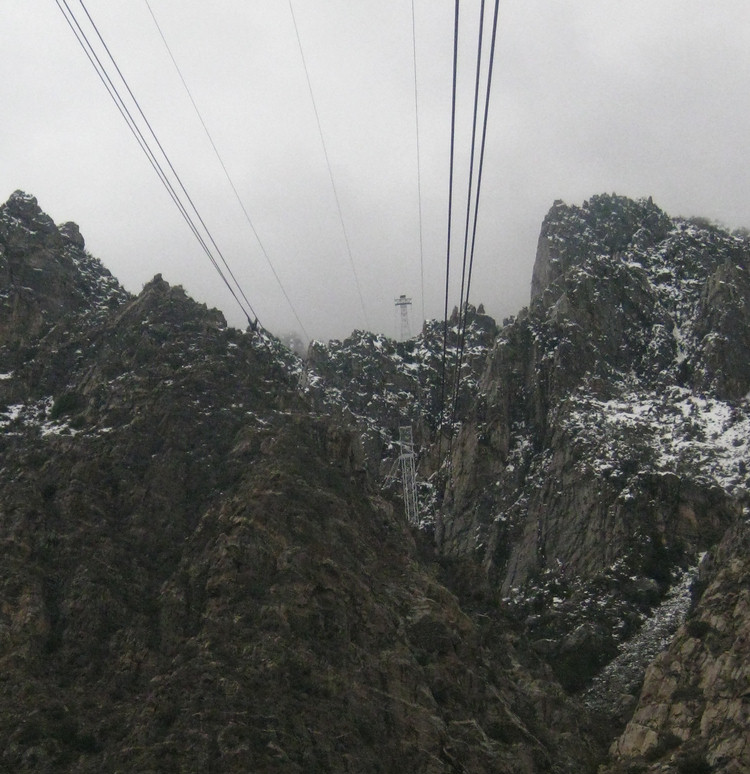
Those two inch cable looks pretty skinny from here

Me scared? Yes!!
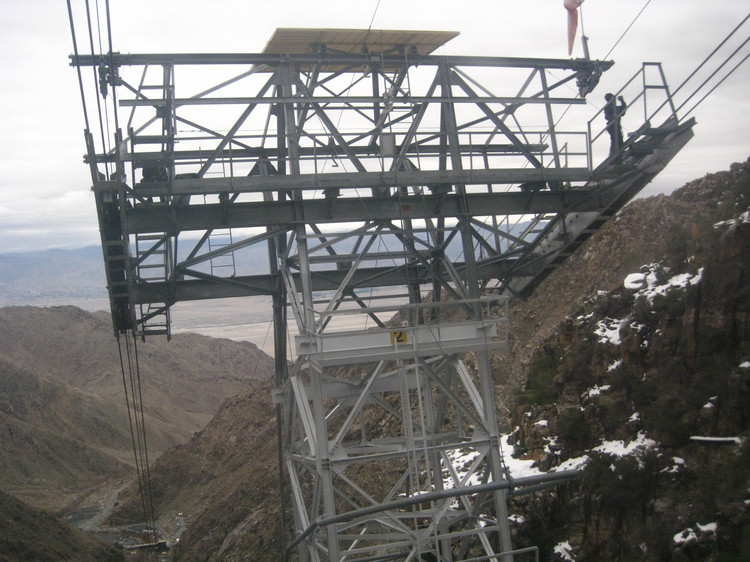
Tower #2

Eye the small platform on the top *brownish color)
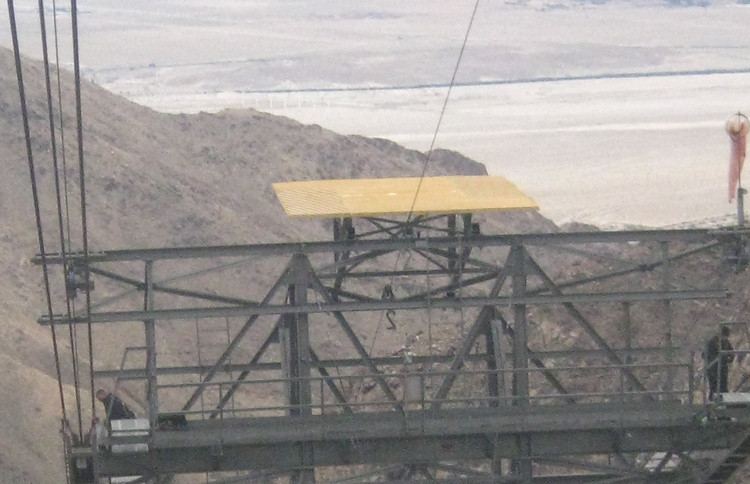
It's actually 20x20 and is used by the helicopters to land and do repair
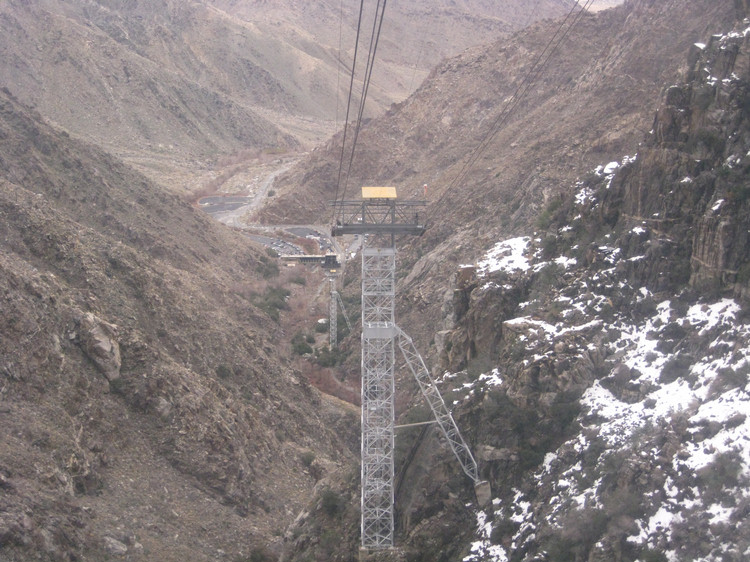
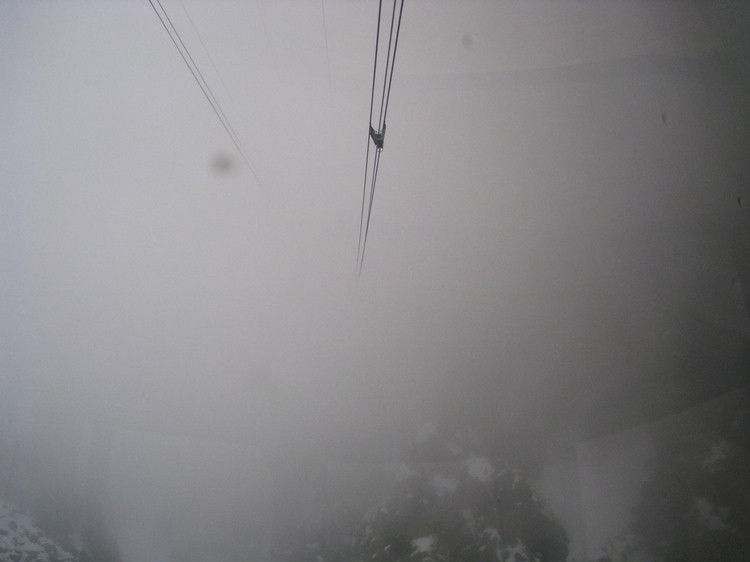
The cables disappear into the clouds
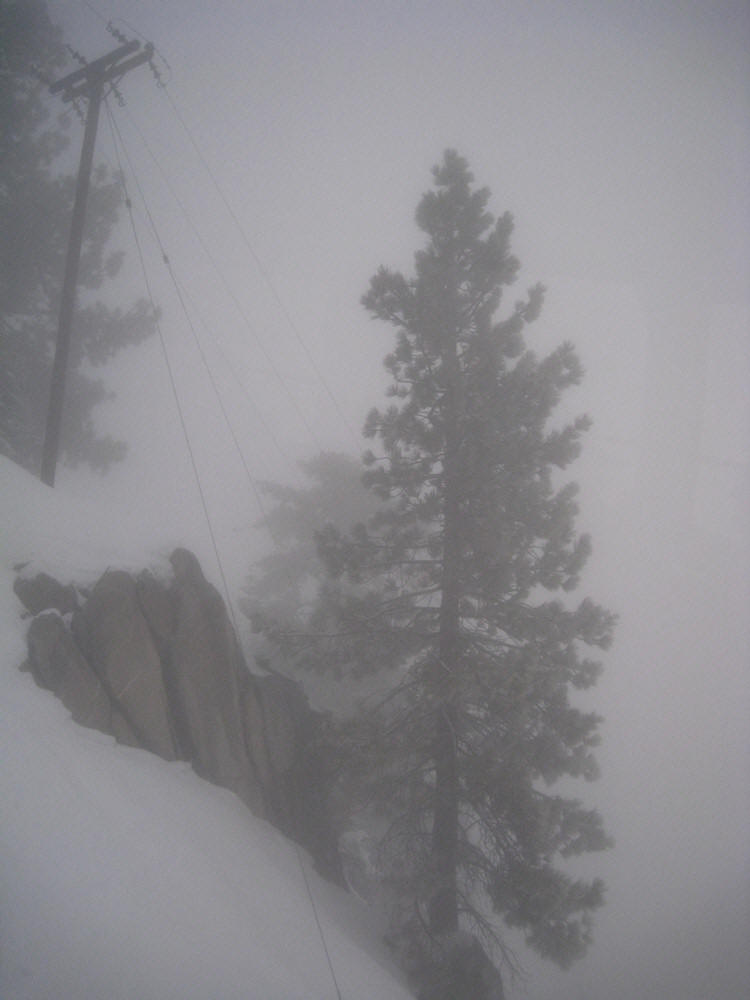
We arrived in the clouds
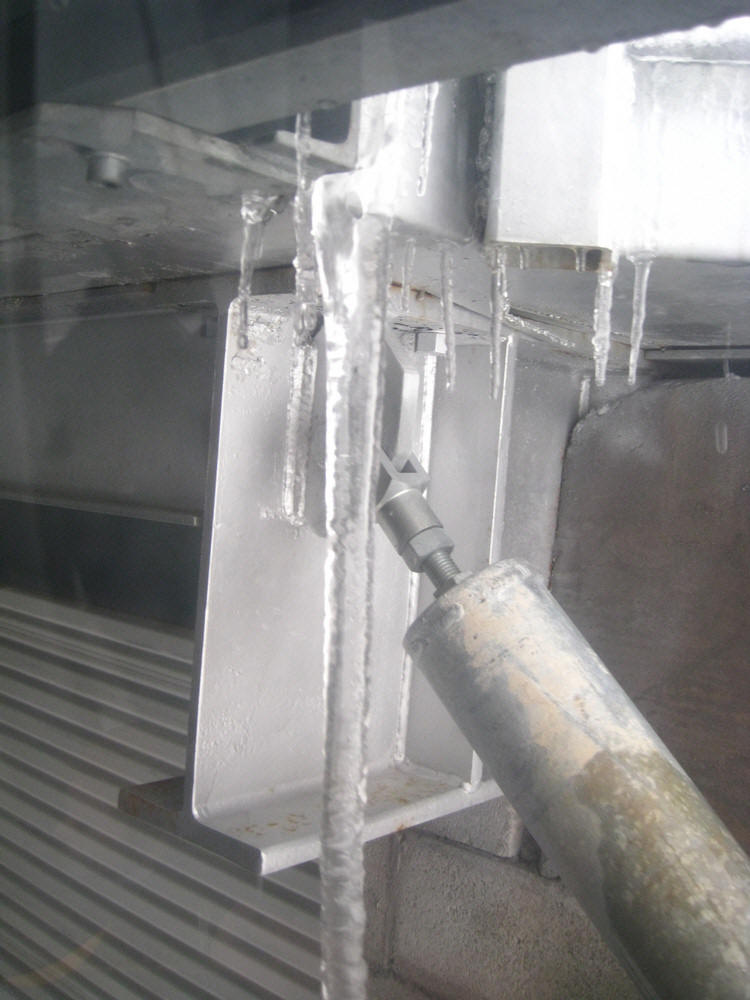
Icicles were everywhere
Did you know? - An icicle is a spike of ice formed when water dripping or falling from an object freezes. Typically, icicles will form when ice or snow is melted by either sunlight or some other heat source (such as heat leaking from the interior of a heated building), and the resulting melted water runs off into an area where the ambient temperature is below the freezing point of water (0°C/32°F), causing the water to refreeze. Over time continued water runoff will cause the icicle to grow.
We Made It To The Top
Did you know? - Passengers disembark at the Mountain Station in the alpine wilderness of Long Valley and Mount San Jacinto State Park. The air can be as much as 40 (°F) or 22 (°C) degrees cooler at the top than in the desert. Visitors can walk along nature trails, take a burro ride or even play in the snow during the winter months. Back-country hiking can be done with a permit from the U.S. Forest Service. There are two restaurants at the summit, one of which specializes in fine dining. Both stations have gift shops specializing in Aerial Tramway-related merchandise as well as educational toys.
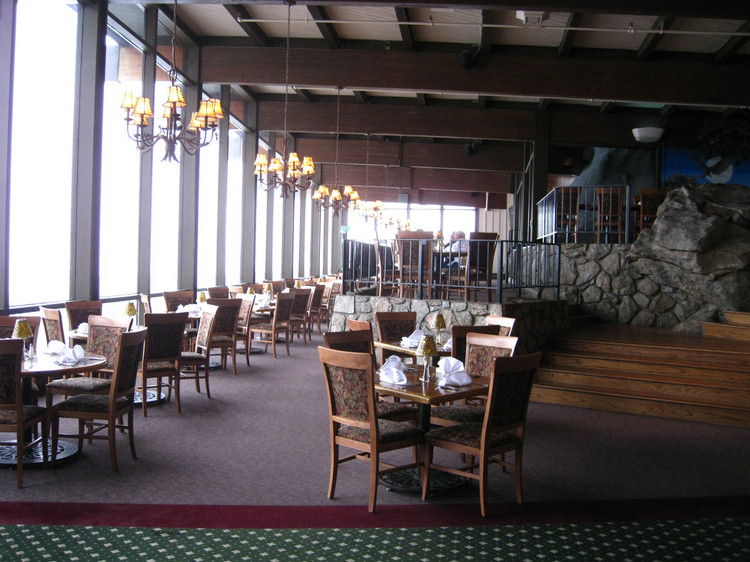
The Pines Restaurant
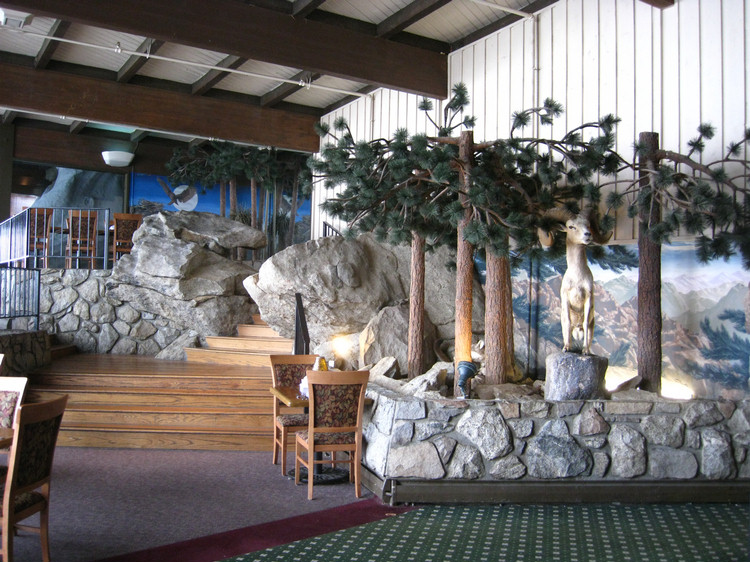
The decorations were neat beinging the outdoors inside!
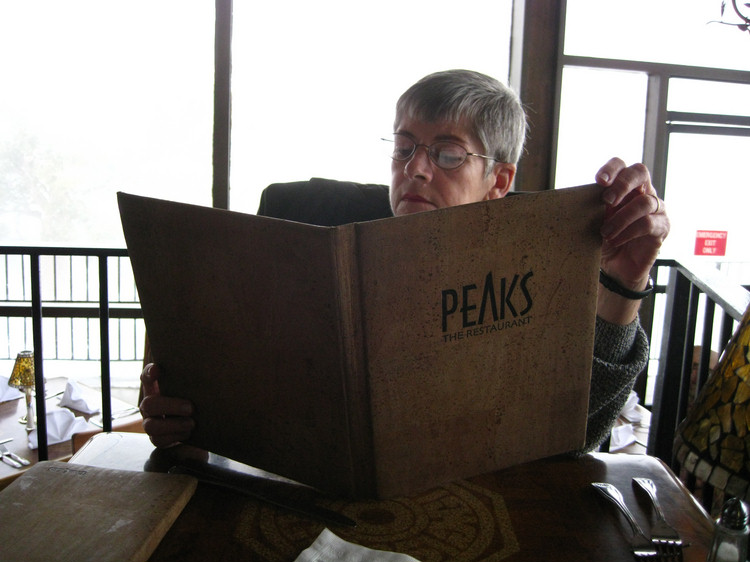
Food adequate, Champagne magnificent!

She is happy: high, warm, and champagne

Picture taking with such a strong white background was a challenge

Paul's shirt was ready to order
Time To Venture Outside
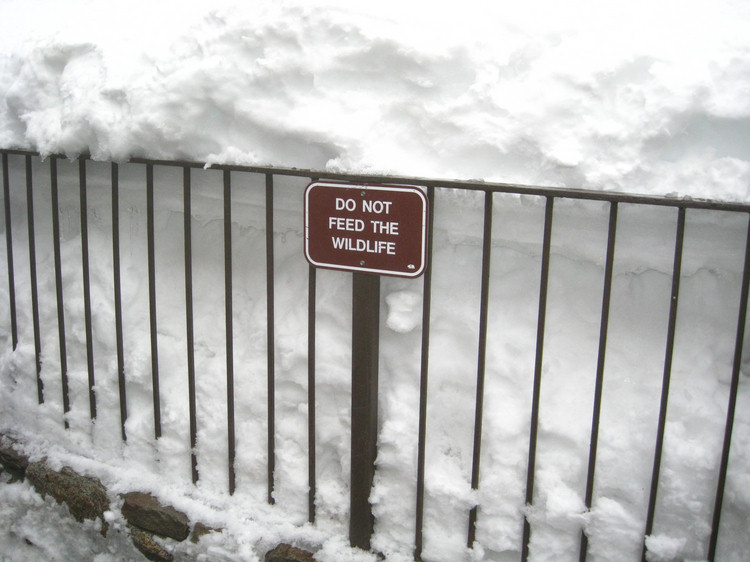
Are they kidding; the only wildlife is inside today!
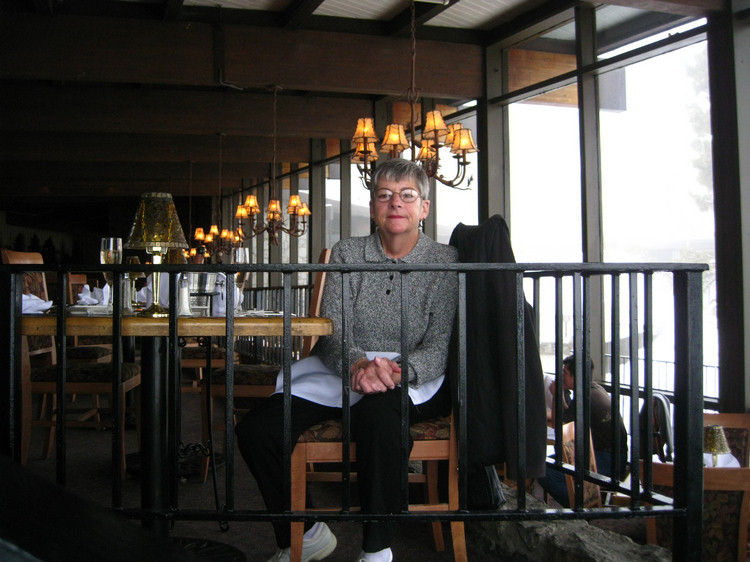
Paul was out in the cold and Sue was nice and warm inside!

The Christmas Tree could be seen for 100 miles on a clear night

Still slightly foggy
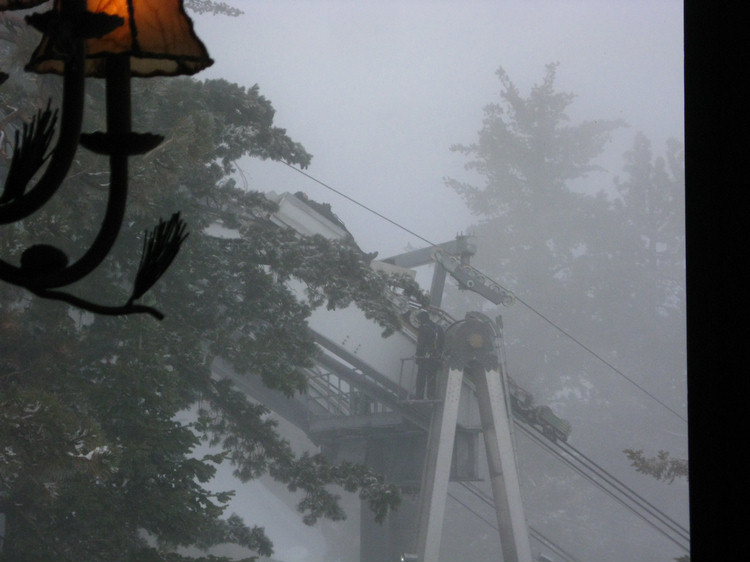
Look at the top of the tram carfully
Did you know? - The carriage contains 24 wheels and supports the cabin on the track ropes on which it rides. There is one carriage per cabin. He rode atop the carriage. A detail shot of the 40mm compacted hauling cable. Both cabins are attached to this cable which spans the distance from the Valley Station to the mountain. It is 13,100 ft long and weighs 4.22 lbs. per foot.
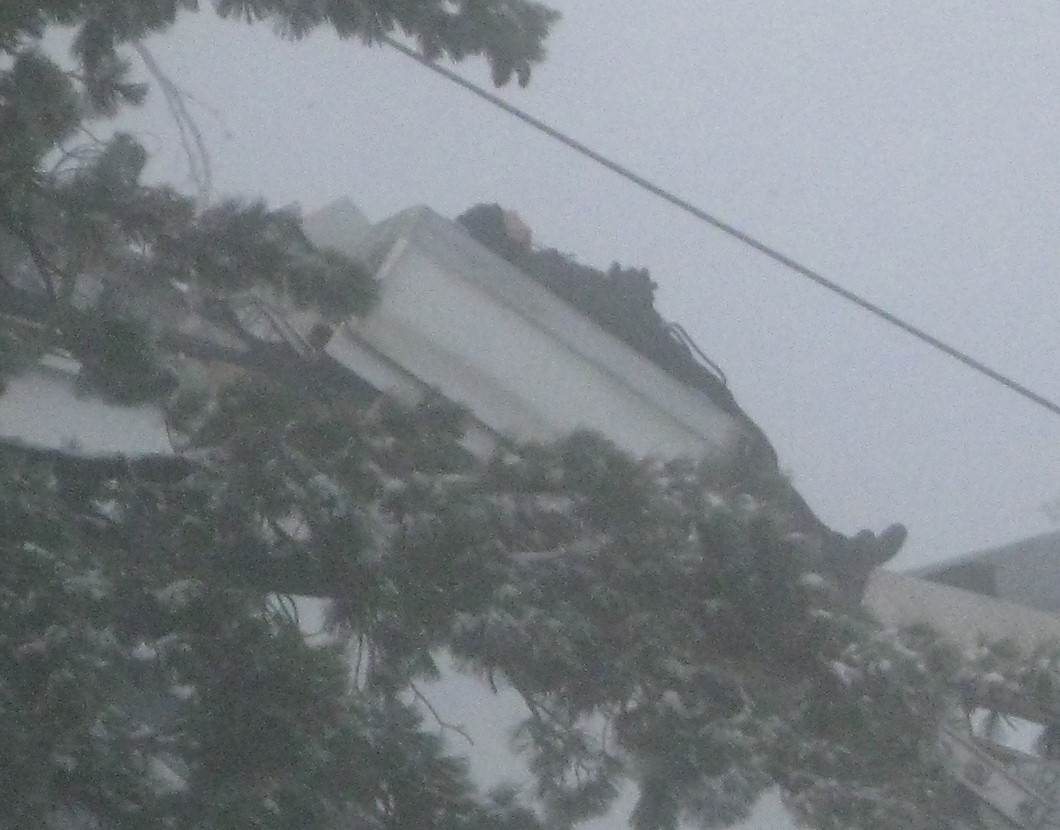
He rides it twice a day to inspect cables and tower hardware... Ouch!
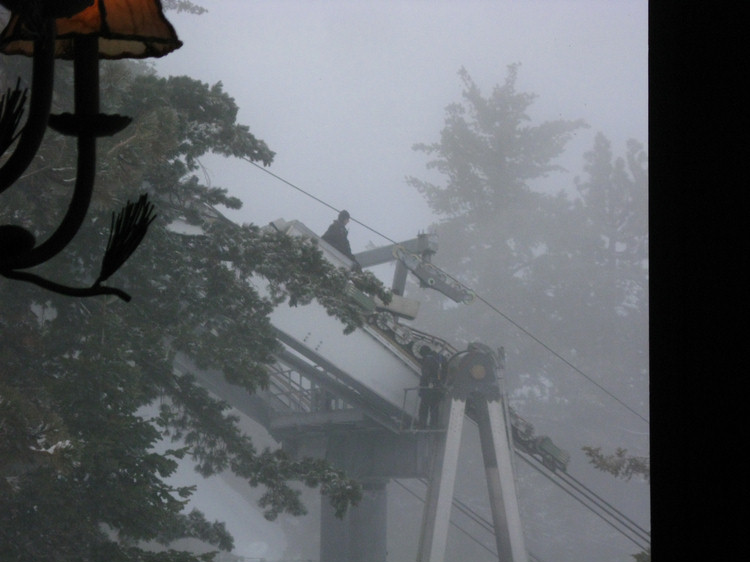
Scarey!!!
Did you know? - Construction of the Tramway was an engineering challenge and was soon labeled the "eighth wonder of the world.'' The superlative was earned because of the ingenious use of helicopters in erecting four of the five supporting towers. Some 20 years later, the Tramway was designated an historical civil engineering landmark.
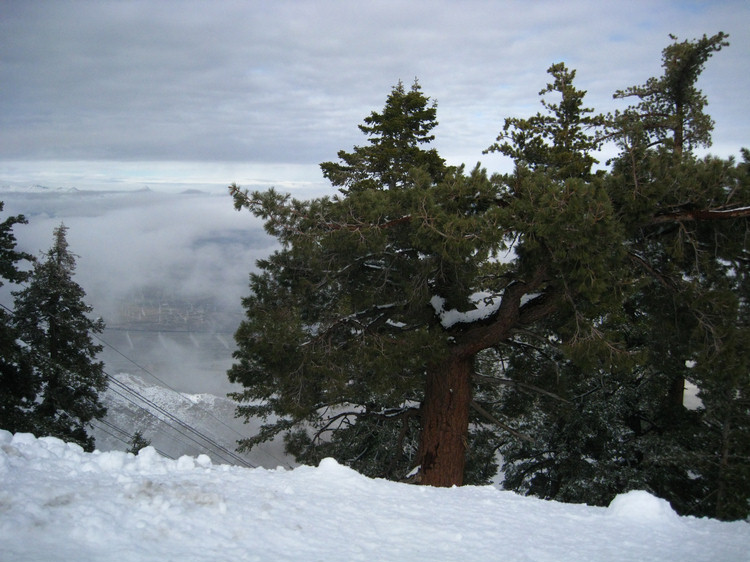
It suddenly cleared up
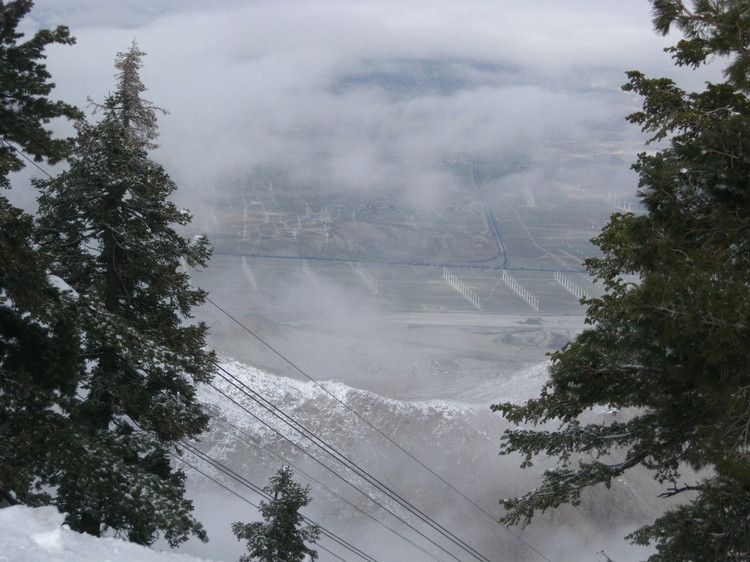
See the wind powered electrical generators 8,000 fee
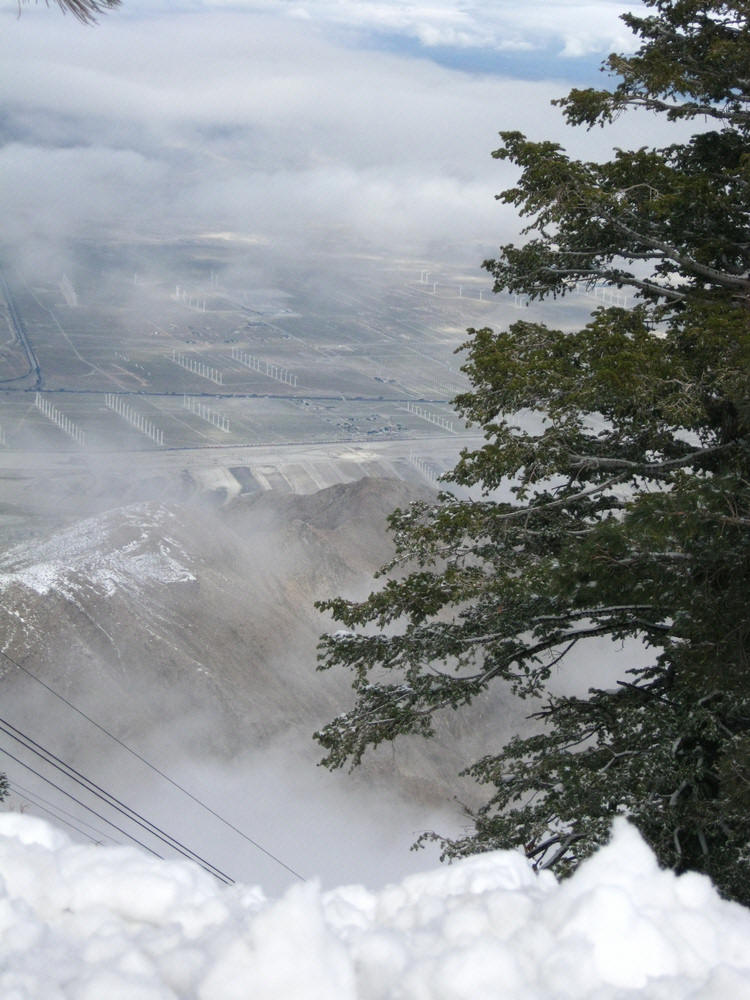
Look carefully at the desert floor 8,000 feel below
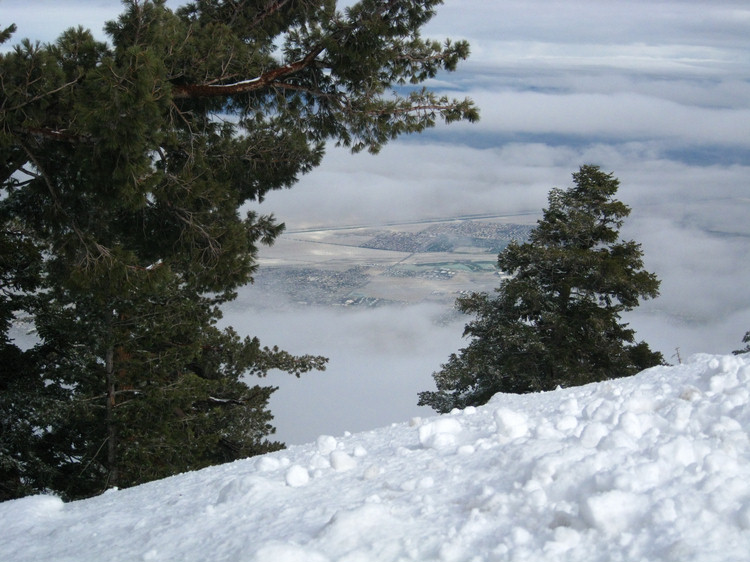

Palm Springs below
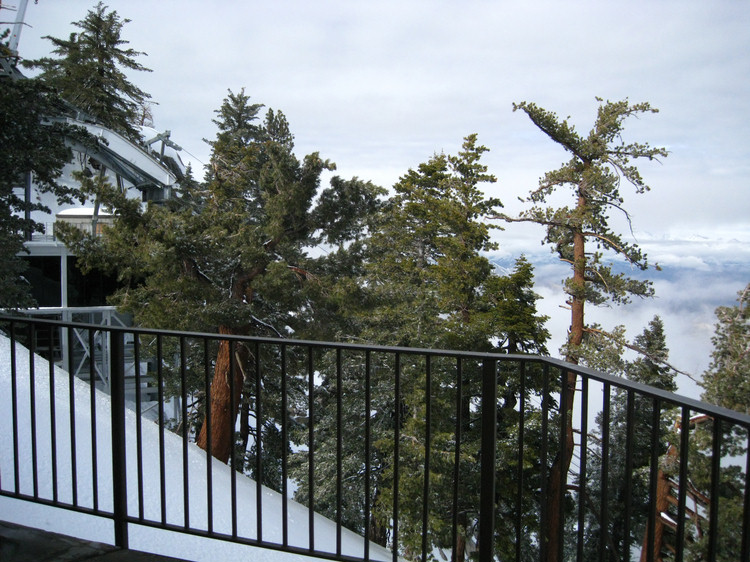
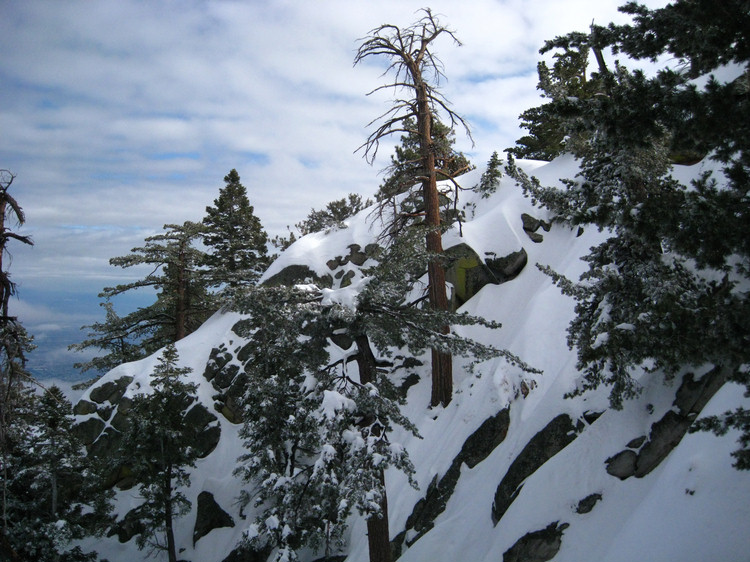
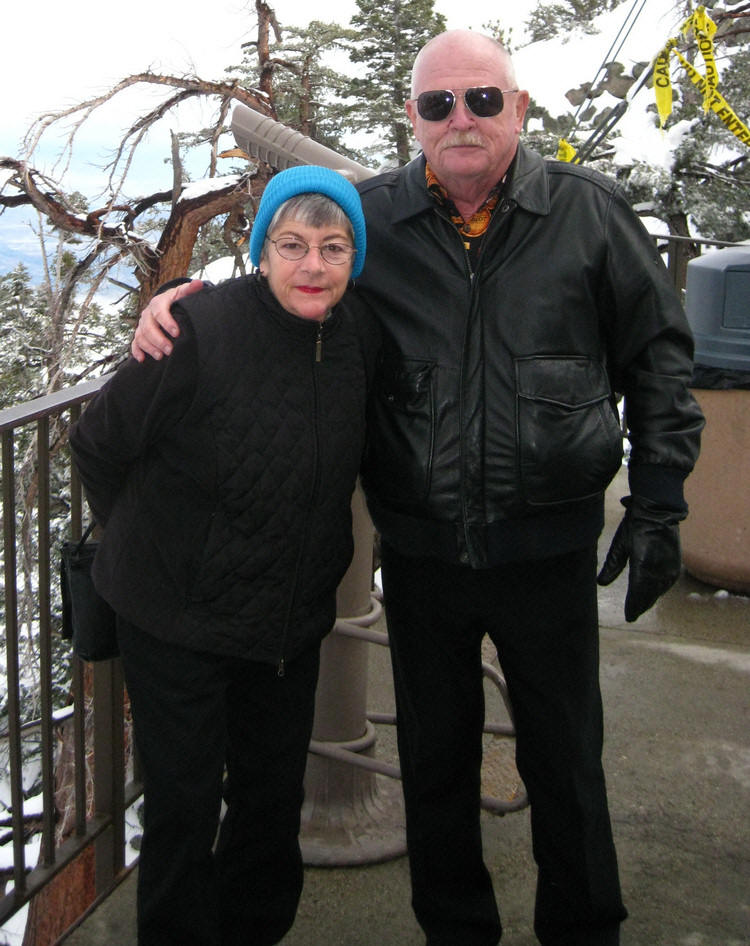

Guess what I am going to do???
Did you know? - A snowball is a spherical object made from snow, usually created by scooping snow with the hands, and compacting it into a roughly fist-sized ball. The snowball is often used to engage in games, such as snowball fights. Snowball fights are usually light-hearted and involve throwing snowballs at one's friends or family. The pressure exerted by the hands on the snow is a determinant for the final result. Reduced pressure leads to a light and soft snowball. A higher pressure causes the snow to melt, turning into liquid water. Once the pressure is removed, the water turns again into ice, leading to a more compact and hard snowball called an iceball, which eventually can be considered harmful during a snowball fight. The process of melting and refreezing is called regelation.
A snowball may also be a large ball of snow formed by rolling a smaller snowball on a snow-covered surface. The smaller snowball grows by picking up additional snow as it rolls. The terms "snowball effect" and "snowballing" are named after this process. This technique is often used to create snowmen.
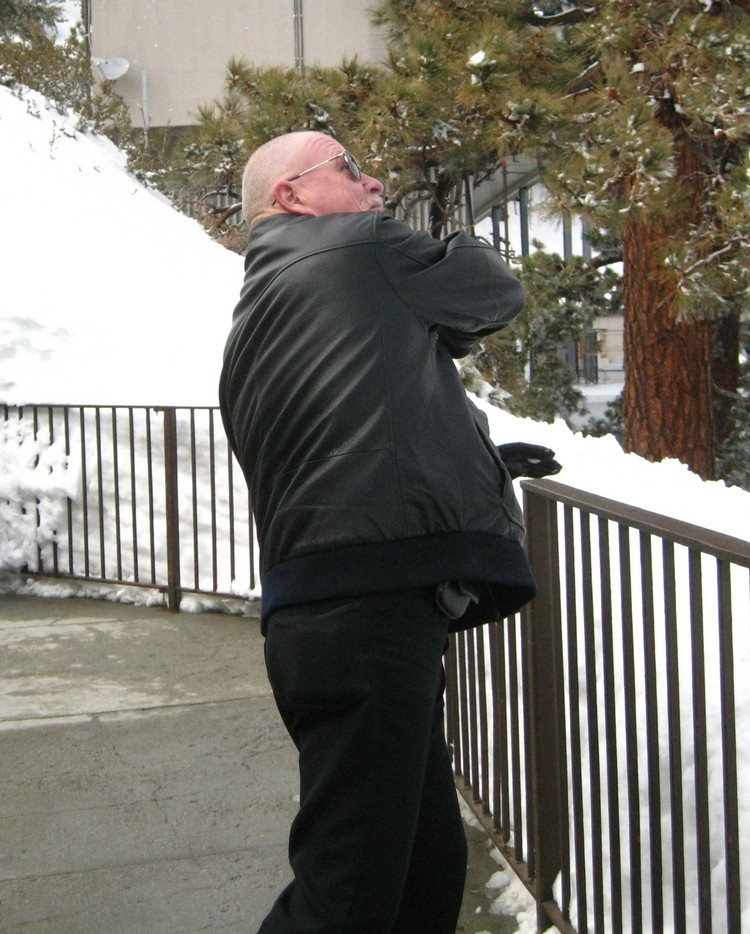
Zot... 400 yards!
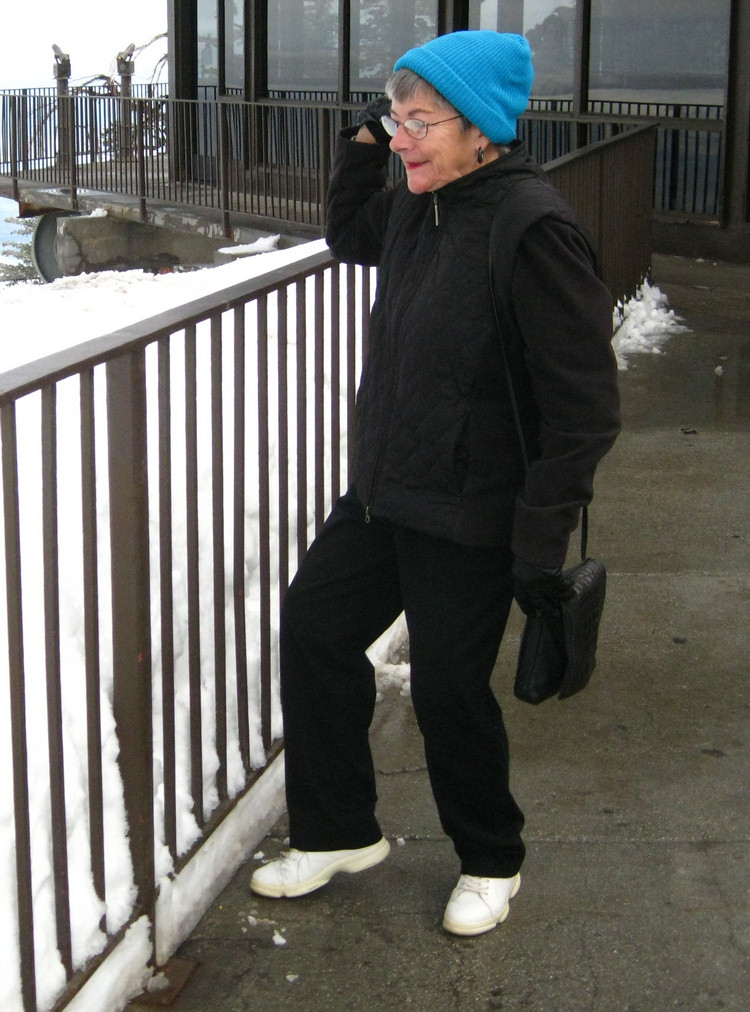
"Look out below!!!"
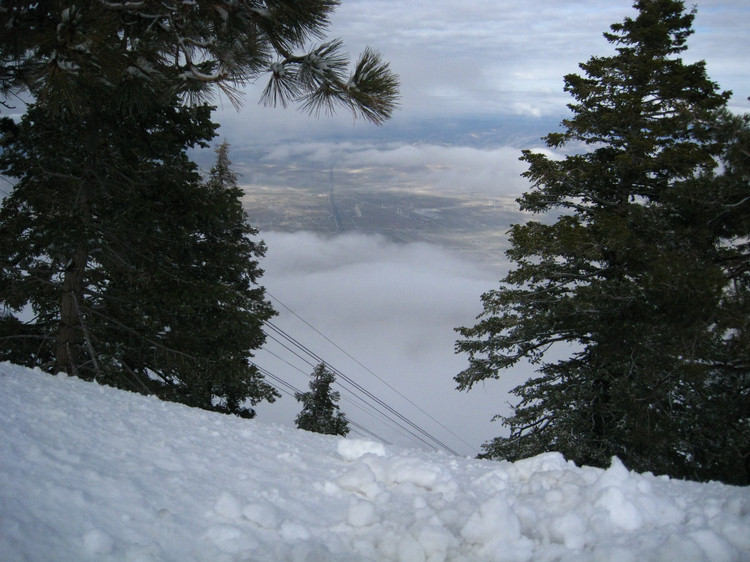
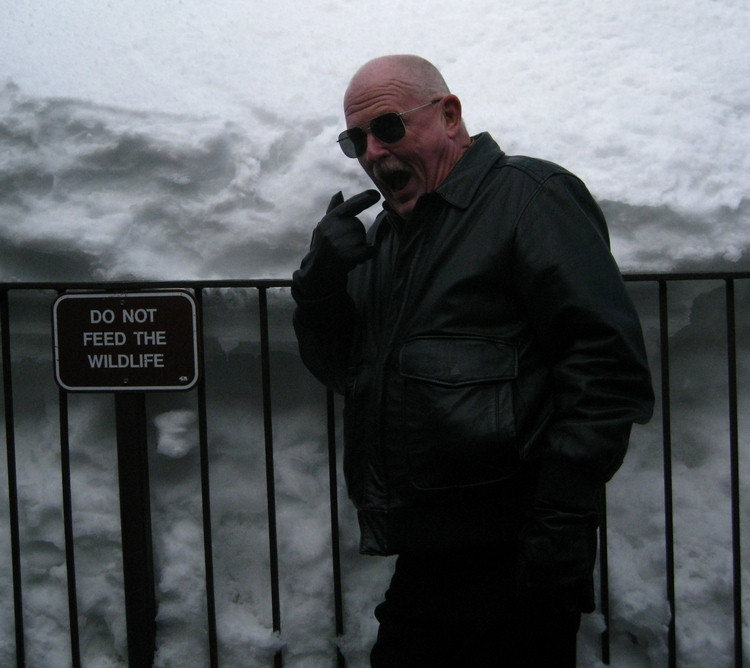
Him hungary
Did you know? - Snow is a type of precipitation within the Earth's atmosphere in the form of crystalline water ice, consisting of a multitude of snowflakes that fall from clouds. Since snow is composed of small ice particles, it is a granular material. It has an open and therefore soft structure, unless packed by external pressure. Snowflakes come in a variety of sizes and shapes. Types which fall in the form of a ball due to melting and refreezing, rather than a flake, are known as graupel, with ice pellets and snow grains as examples of graupel. Snowfall amount and its related liquid equivalent precipitation amount are determined using a variety of different rain gauges.
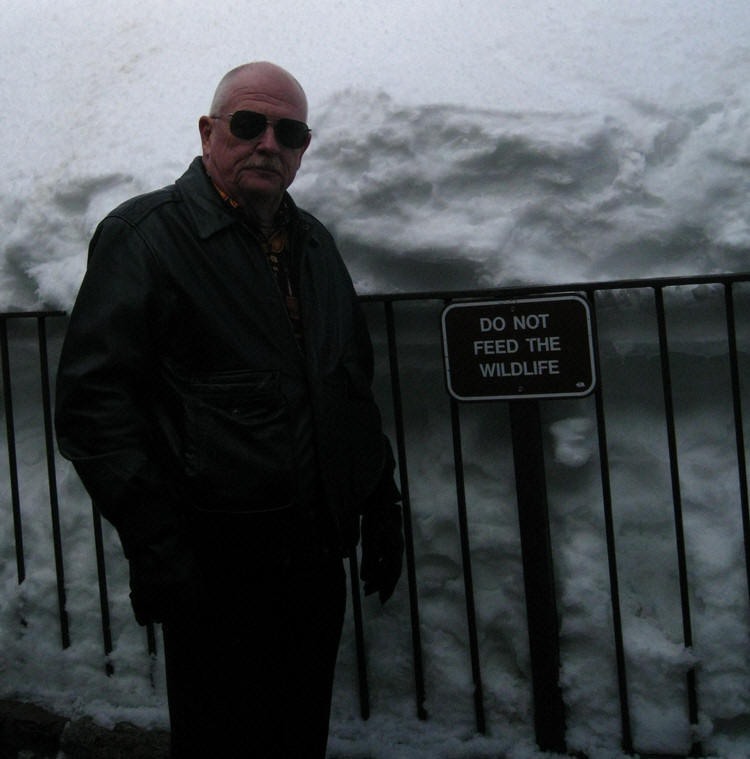
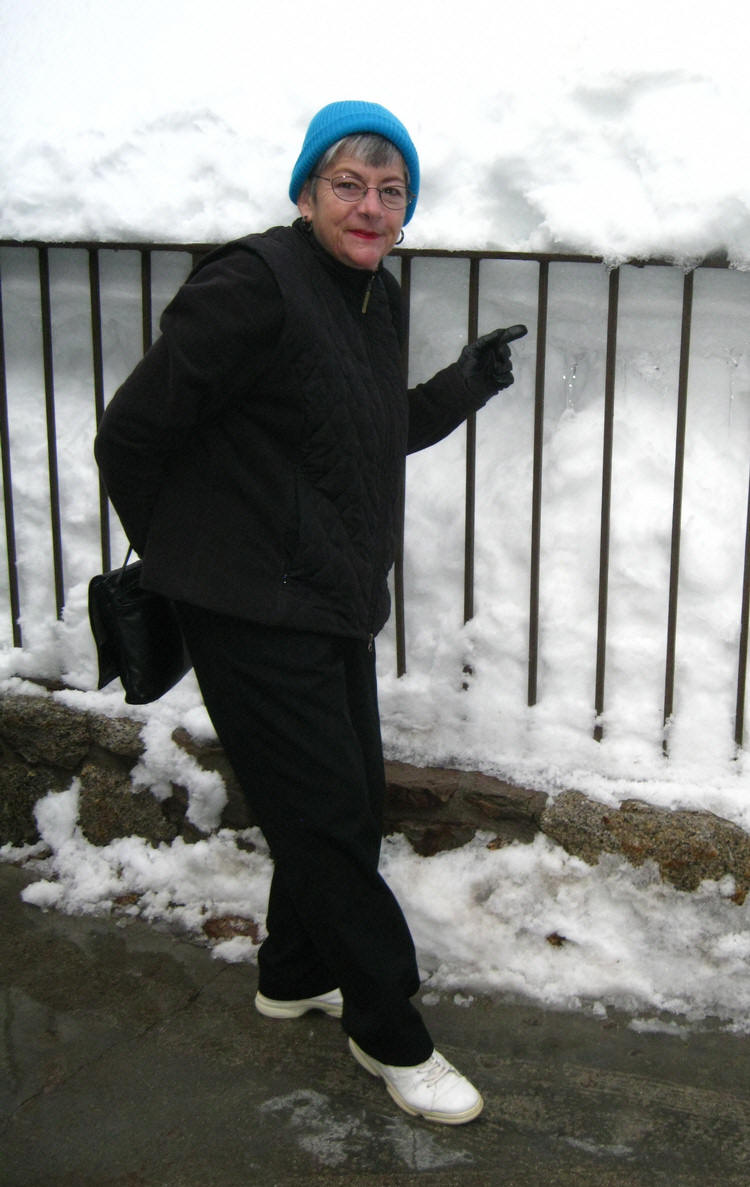
She found the icicles
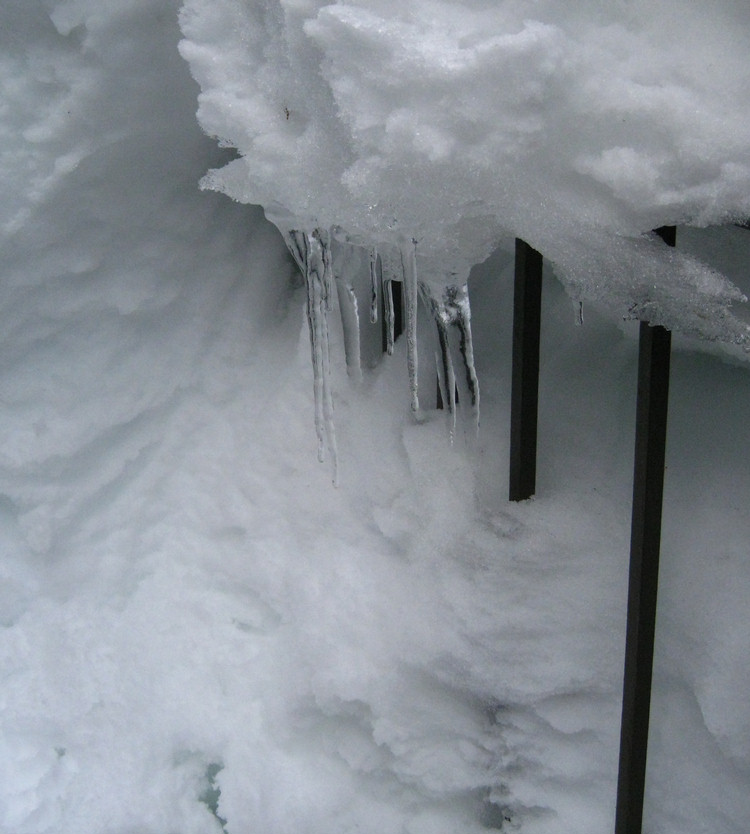
The icicles were beautiful